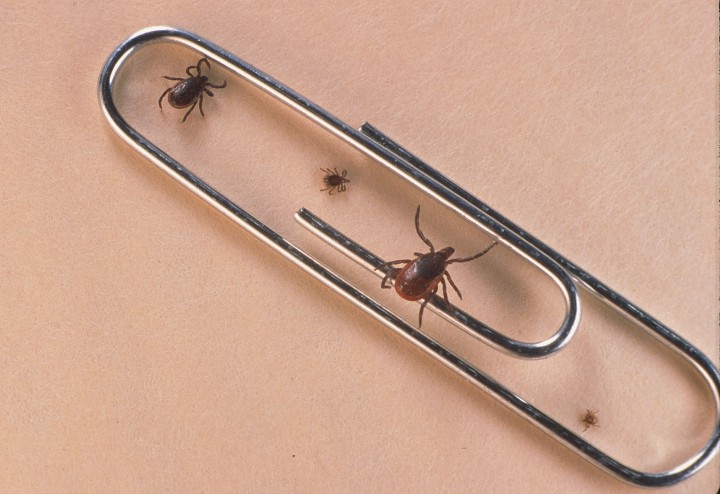The summertime spread of Lyme disease has given rise to extra caution about ticks and the roving birds and mice carrying the illness.

But a new study suggests we put just as much focus on another animal.
After observing human Lyme disease cases in a Connecticut community over a 13-year period, authors of a Journal of Medical Entomology paper concluded that tick populations – and reported Lyme cases among people – decreased drastically after deer were hunted and their populations reduced.
Canada has seen a drastic increase in the number of human Lyme cases: From 128 reported cases in 2009 to an expected 500 cases in 2013, according to the Public Health Agency of Canada.
Endemic Lyme disease areas are increasing across the country which has experts concerned. People are becoming more susceptible to the disease, in part, because there simply are more areas where they can contract it.
There is good evidence to suggest that white-tailed deer play a very important role in increasing the “zones of risk” of acquiring Lyme disease, said Doug Sider, Medical Director of communicable disease for Public Health Ontario. When deer migrate they drop ticks off in a new area, and the ticks lay hundreds of eggs before they die, allowing them to populate new areas.
Much of the focus has been on migrating birds and mice, both of which are reservoirs for the disease. Deer, on the other hand, are just hosts for the ticks – they don’t carry the Lyme bacterium in their blood.
Ticks have a complex life-cycle. In the first year of life ticks can sustain themselves on smaller mammals such as mice and birds, said Dr. Howard Kilpatrick, co-author of the Connecticut study.
The second year is the “key link” between ticks and deer, he said. If there aren’t any medium or large mammals to feed on, the tick can’t reproduce. So if tick populations aren’t wiped out in their first year, deer have become the next target.
But controlling adult tick populations shouldn’t require culling deer, Sider said. Tick-killing chemicals called acaricides can be applied to deer through newly developed feeding stations – a method Sider said has been proven to reduce tick populations without harming their deer hosts.
But CanLyme President Jim Wilson would rather take studies like Kilpatrick’s “with a grain of salt.” He argues the findings are from specific geological and ecological areas with too many variables that are different from Canada, he said.
There should be more emphasis on the bird and mice population, Wilson believes, because they act as the reservoirs of the disease.
But Kilpatrick thinks deer are just as important.
What is Lyme disease?
Lyme disease is transmitted to humans through infected blacklegged tick bites. Humans cannot transmit the disease to one another. It can vary from person-to-person, making identification and treatment difficult, but Public Health Agency of Canada lists these symptoms to watch out for:
- fatigue
- fever or chills
- headache
- spasms or weakness
- numbness or tingling
- swollen lymph nodes (glands found all over the body; in your neck, armpits or groin, for example)
- skin rash
- dizziness or trouble focusing
- nervous system disorders (headaches, weakness, numbness, seizures, slurred speech, etc.)
- arthritis or arthritic symptoms
- abnormal heartbeat
Lyme disease is treated with antibiotics but the sooner a person is treated the better. If Lyme disease is left untreated it can lead to chronic health problems such as heart issues, nervous system damage and affect brain function. If you’ve been bitten and exhibit any of these symptoms Public Health Agency of Canada recommends that you consult with your health care practitioner.





Comments